Rowley Homestead Cabin
Introduction
Text-to-speech Audio
The Rowley family, Fred, Martha, Fred Jr., Clara, and Opal, began homesteading here in 1919. They lived in this cabin during the summer months, though Martha only spent a few summers here. Fred built the south half of this cabin after he finished the original barn. When he finished the cabin, it was considerably larger than most homesteaders’ cabins. Johnny Childs’ cabin, which forms the base of the horse barn, is more typical in size. If you look along the wall by the door, you can see that Fred kept the logs of the original room long because he planned to add another room in the future. After a few summers, Fred began living here year round. We cannot be certain exactly how the cabin was set up while he lived here, but we can make some inferences based on oral histories and evidence from other homesteaders of that era. The south half of the cabin is now set up as the kitchen, dining room, and, when needed, the laundry room. The other room was the bedroom for the entire family. Most spaces inside a homesteader’s cabin served more than one purpose because of the lack of space. To add more rooms meant cutting more logs and building the addition yourself, so most homesteaders made do with small homes.
Images
The interior of the cabin, showing a Daisy butter churner, a washing bin, a wood-burning stove, and a set dining table
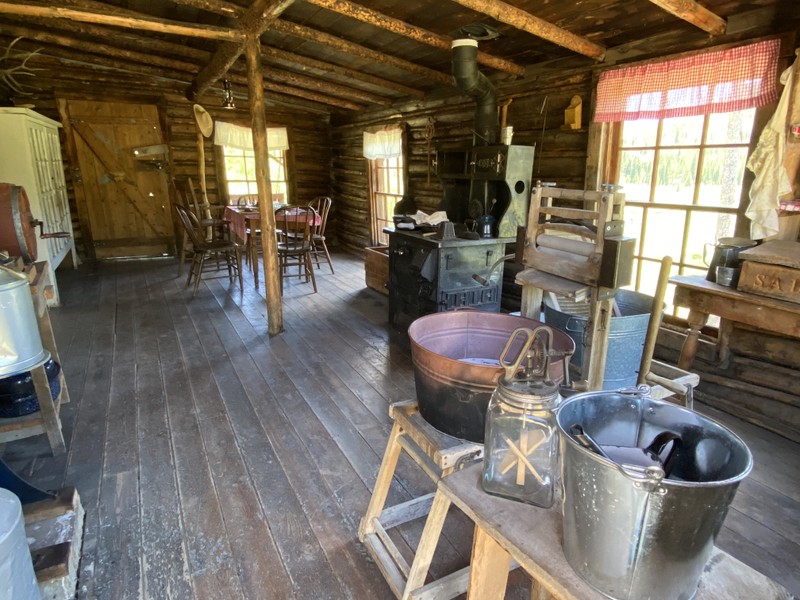
The interior of the cabin, showing a dining table set with china, a lantern, and plastic food
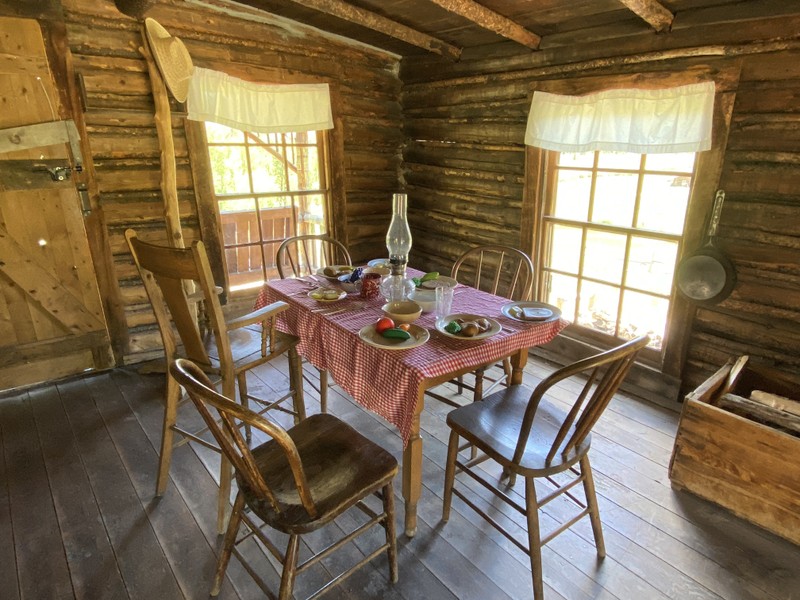
The interior of the cabin, showing a cream separator, a butter churner, and several shelves of foodstuffs

The interior of the cabin, showing a wood-burning stove, a clothes washer and wringer, a medicine cabinet, and several shelves of objects

The cabin bedroom. Note the chamber pot and the stove for cold nights.
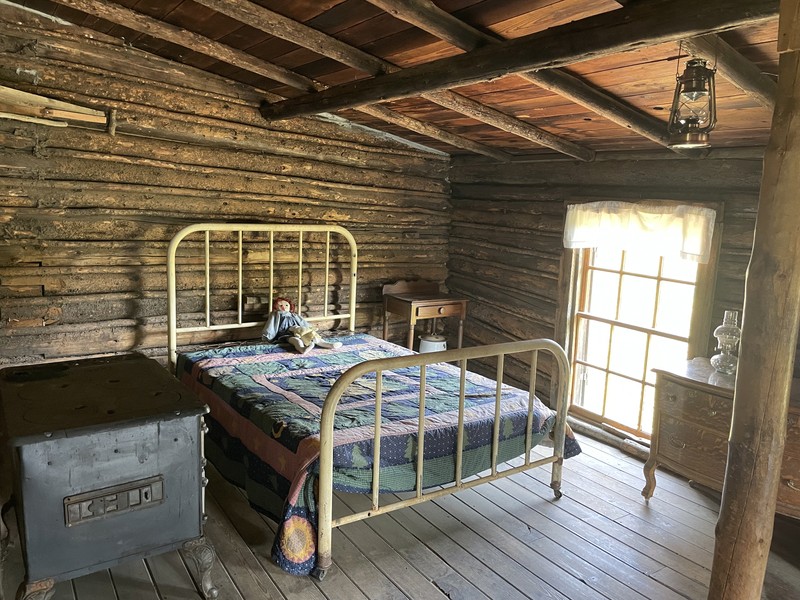
Fred Rowley on the back porch of the homestead.
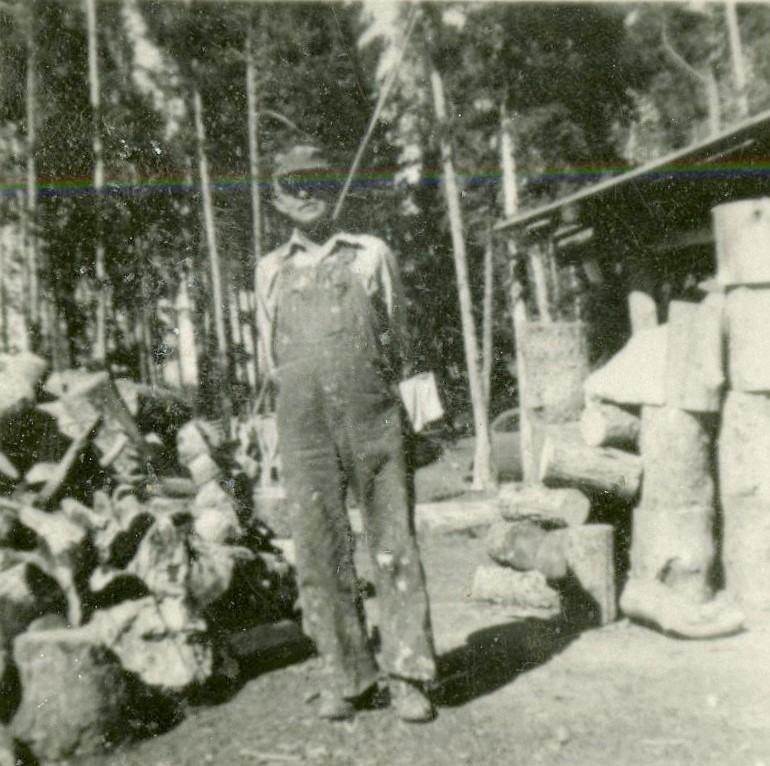
L-R: Fred Rowley, JoAnn, Sharon (Sherry), Woodrow (Woody), and Clyde McDougal on the front porch of the homestead.
%2C%20Woodrow%20(Woody)%2C%20and%20Clyde%20McDougal.jpg)
The front porch of the homestead in 2021.
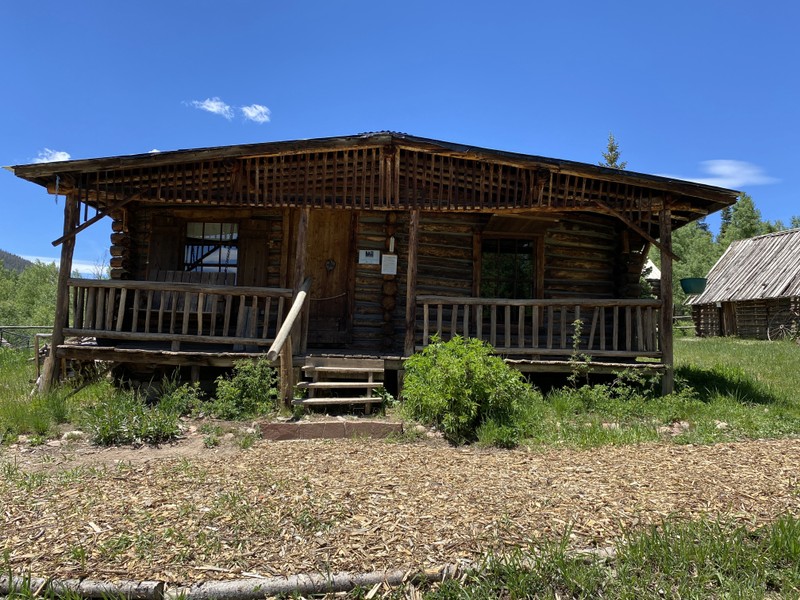
Backstory and Context
Text-to-speech Audio
For the first three years after their arrival to homestead here in 1919, the Rowleys continued to return to their Denver home during the winter months. Homesteading was a difficult way of life all year round, but it was particularly difficult up in the mountains during the winter. After the third year, Fred decided to stay at the Homestead full time.
Martha, Fred’s wife, came to the Homestead for the first three summers, but, in 1922, she decided to return to Denver for good. When the Rowleys arrived in 1919, Denver was a fairly modern-looking city. There was electricity in parts of the city, running water and indoor plumbing were becoming more accessible, and early cars like Model T Fords were starting to appear on the streets. Martha also had a job as a seamstress at the Denver Dry Goods department store. She likely decided that her dreams and those of her husband’s differed too much and she chose to leave the homesteading life behind. The couple’s three children spent the school year in Denver and the summers at the homestead.
In the Homestead are several pieces of equipment which were essential for Fred to run his farm. In the kitchen, the large woodstove acted as both a source of heat in the winters and as Fred’s stove and oven. The stove was used throughout the year, even in the summer as it was a source of heat during the evenings and hot water during the day. Across the floor from the stove is a table with a reddish-brown barrel on top. This barrel was one of a kind butter churn. It had paddles inside and homesteaders placed fresh cream inside and spin the handle to make butter. To the left of the churn is a large blue and silver machine. This is a cream separator which Fred and other homesteaders used to separate cream from raw cow’s milk. They spun the handle on the other side of the machine to spin the silver bowl on top of it. The centrifugal force separated the cream from the milk. When they turned on the spigot the cream would flow into the small cannister and the milk into the larger one. The laundry equipment is also set up in this room.
In the bedroom Fred had another stove to provide extra heat during cold winter nights. Unlike the kitchen stove, this stove likely only ran during the winter or especially cold spring or fall days. Note the chamber pot. This was used in the evenings when it was too dark or cold to use the outhouse. Across the room is a desk for his children to draw or practice schoolwork. When they were younger he also likely had a bed near the desk for them. In the corner there is a sled, sock puppet, and a checkers board on the desk. These are common toys kids in the era may have made and played with. Outside there are lasso ropes, stilts, and a tandem ski which are more toys Fred’s children may have enjoyed.
The front porch is architecturally detailed. It demonstrates Fred’s love for his house and building, particularly the small stick details. This is reminiscent of the western stick architecture that was common throughout the area. Several of Fred’s family photos were taken on this porch indicating his pride in both his home and his children. Fred likely spent a lot of time repairing and creating his house and porch, even today, almost 80 years after he passed away, his house continues to exemplify homesteads in the early twentieth century.
In 1967, YMCA of the Rockies acquired 3,000 acres from the Just family, which included the Rowley Homestead. In 1971, the YMCA began to repair the Rowley cabin and barns, replacing roofs, floors, and windows. The work stagnated soon after, but In 1981, Barbara S. King, then-Program Director at Snow Mountain Ranch, started the project of creating a living history site and nature center at the Rowley Homestead. She formed a group to research the history of the Rowley family and replace and repair the Homestead furnishings. Even though they worked through the winter and spring, the project proved time-consuming, so the Homestead did not open until July 1982. Historical research and preservation efforts continue today such as repairing fences, re-chinking the buildings, and developing new digital programming, such as this tour.
Sources
Archives of YMCA of the Rockies, Snow Mountain Ranch Collection, Rowley Homestead folders.
Archives of YMCA of the Rockies, Snow Mountain Ranch Collection, Rowley Homestead folders.
Archives of YMCA of the Rockies, Snow Mountain Ranch Collection, Rowley Homestead folders.
